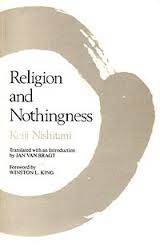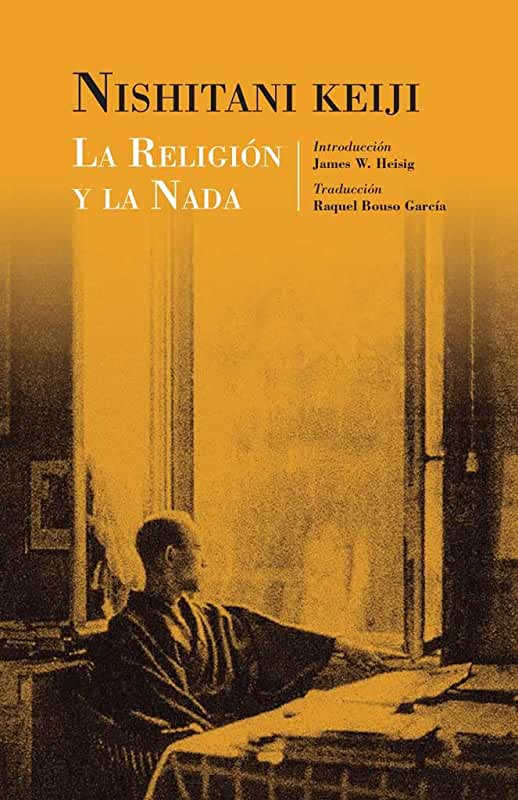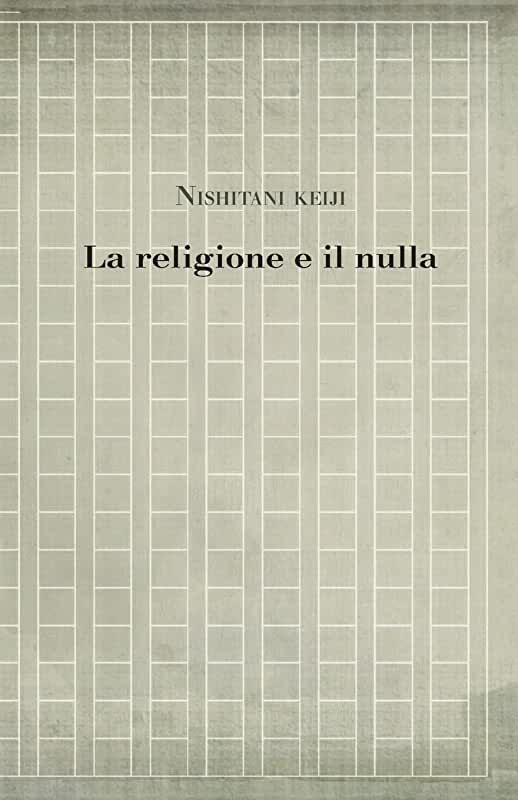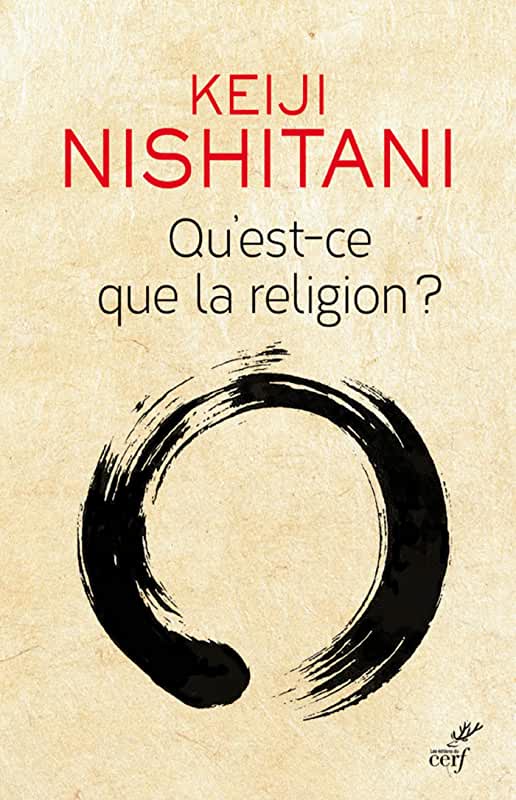“Religion is nothing less than a conversion from the self-centred … mode of being, which always asks what use things have for us … to an attitude that asks for what purpose we ourselves … exist. Only when we stand at this turning point does the question “What is religion?” really become our own” (Nishitani Keiji – Religion and Nothingness p 4-5).

Religion and Nothingness begins with a chapter entitled “What is Religion?” which was used by the Japanese publisher as the title of the book (Shukyo to wa nani ka). This chapter is a text originally written by Nishitani in response to an invitation for an essay on this topic, which was later followed by the five other essays included in the book, written between 1952 and 1961. As an adolescent and a young man, Nishitani had suffered from an acute sense of despair, originally associated with personal circumstances, especially his struggle with tuberculosis, but increasingly caused by the rapid change Japan was undergoing at the time in connection with the process of modernisation, and its impact on Japanese institutions, in particular the rise of nationalism, and Japan’s military campaigns on the East Asian continent. His first move had been to seek in Nietzsche’s writings a path out of what he called a “pre-philosophical” nihilism.
So, given Nietzsche’s brutal attack on Christianity and his statement about the death of God, we could be forgiven for expecting a sharp critique of religion as such, which would have included Buddhism. This could not be further from the truth. John Krummel explains that “Nishitani’s orientation has much to do with his conviction that authentic philosophy is inseparable from religion. But by ‘religion’ (Jp shukyo), he has something specific in mind. Instead of a dogmatic adherence to a tradition, ‘religion’ for Nishitani entails a specific attitude to life, which he finds to be a matter of utmost urgency in the contemporary situation where we face issues of modernization and technologization … The Nietzschean cry that ‘God is dead’ resonates with the Zennist Rinzai’s cry to ‘kill the Buddha’. Neither has to be taken as necessarily anti-religious.”

Nishitani suggests a number of common definitions of religion found in Western writings: “the relationship of man to an absolute, like God,” an “idea of the Holy,” “the abandonment of self-will in order to live according to the will of God,” or “the intuition of the infinite in the finite” (RN 5). Though he admits that all these definitions are valid, and could be argued for, Nishitani dismissed them as unsatisfactory because they are the products of an investigation of religion as an object viewed from the outside and, in his view, they fail to grasp what religion is as such.
For Nishitani “religion is at all times the individual affair of each individual” (RN 2) and we cannot therefore “understand what religion is from the outside. The religious quest alone is the key to understanding it” (RN 2). Instead of asking what the purpose of religion is, we should ask “For what purpose do I myself exist? … Of everything else we can ask its purpose for us, but not of religion. With regard to everything else we can make a telos of ourselves as individuals, as man, or as mankind, and evaluate those things in relation to our life and existence … But religion upsets the posture from which we think of ourselves as telos and center for all things. Instead, religion poses as a starting point the question: For what purpose do I exist?“ (RN 3).
In “The Logic of the Place of Nothingness and the Religious Worldview,” Nishida (1870-1945), the founder of the Kyoto School and Nishitani’s mentor, had similarly stated: “There must be an overturning, a radical conversion of mind, in any religion. Without it there is no religion. I say, therefore, that religion can be philosophically grasped only by a logic of absolute affirmation through absolute negation.”

For Nishitani, asking “for what purpose do I exist?” immediately brought up his painful experience of nihilism, as it is when one finds oneself looking for meaning, that one realises that one’s whole life rested on the belief in an inherent meaning of the world. Just as a sound one hears when it stops, our need for meaning comes into view when it suddenly disappears. But one cannot yet create a new meaning, or new values, as Nietzsche had invited us to do. One has, for now, become a question, which, when amplified as the Buddhist Great Doubt, can be used to deepen one’s sense of nihility into a positive ground for an embrace and affirmation of reality.
Nishitani continues: “We become aware of religion as a need, as a must for life, only at the level of life at which everything else loses its necessity and its utility … When we come to doubt the meaning of our existence in this way, when we have become a question to ourselves, the religious quest awakens within us. These questions and the quest they give rise to show up when the mode of looking at and thinking about everything in terms of how it relates to us us is broken through, where the mode of living that puts us at the center of everything is overturned” (RN 3). Such a questioning may be triggered by the loss of a loved one, or a frustrating failure, or an illness, any event which disrupts the very ground we stand on. “In the face of this abyss, not one of all the things that had made up the stuff of life until then is of any use.”
However, Nishitani notes: “That abyss is always just underfoot” (RN 3). It is just that we do not normally see it. “Death is not something that awaits us in some distant future, but something that we bring into the world with us at the moment we are born” (RN 4). Don’t we all know this? But it is one thing to know it with our minds, and another to embrace it fully as our lives unfold, moment to moment.

Nishitani adds: “Normally we proceed through life, on and on, with our eye fixed on something or other, always caught up with something within or without ourselves … These engagements block off the way to an opening up of that horizon on which nihility appears and self-being becomes a question. But when this horizon does open up at the bottom of those engagements … something seems to halt and linger before us. This something is the meaninglessness that lies in wait at the bottom of those very engagements that bring meaning to life. This is the point at which that sense of nihility, that sense that ‘everything is the same’ we find in Nietzsche and Dostoevski, brings the restless, forward-advancing pace of life to a halt and makes it take a step back. In the Zen phrase, it ‘turns the light to what is directly underfoot’. … Taking a step back to shed light on what is underfoot of the self … marks a conversion in life itself. This fundamental conversion in life is occasioned by the opening up of the horizon of nihility at the ground of life. It is nothing less than a conversion from the self-centred … mode of being, which always asks what use things have for us … to an attitude that asks for what purpose we ourselves … exist. Only when we stand at this turning point does the question ‘What is religion?’ really become our own” (RN 4-5).
Nishitani is here responding to Nietzsche’s assertion that nihilism could only be overcome “by first admitting the truth of nihility and then choosing to live in the face of it” (Robert Carter). Once the question “what is religion” “becomes our own,” it turns into an existential engagement with the apparent meaninglessness of reality. Nishitani, then, states, in terms that may surprise the reader: “I should like to approach religion from a somewhat different angle, as the self-awareness of reality, or, more correctly, the “real” self-awareness of reality” (RN 5).
The focus here is on the words “real” and “reality,” which Nishitani uses in a very specific manner. Nishitani, in fact, was quick to drop the word “self-awareness” to replace it by “self-realization” of reality when he learned the double sense of the verb “to realize” in English. “By the “self-awareness of reality” I mean both our becoming aware of reality and, at the same time, the reality realizing itself in our awareness. The English word ‘realize’, with its twofold meaning of ‘actualize’ and ‘understand’ is particularly well suited to what I have in mind here, although I am told that its sense of ‘understand’ does not necessarily connote the sense of reality coming to actualization in us. Be that as it may, I am using the word to indicate that our ability to perceive reality means that reality realizes (actualizes) itself in us; that this in turn is the only way that we can realize (appropriate through understanding) the fact that reality is so realizing itself in us; and that in so doing the self-realization of reality itself takes place” (RN 5).

That, for people in the West, the English “realisation” does not necessarily translates into an actualisation of what we have understood, is due to the fact that we only ever seek to “realise” in the sense of to “understand,” as cognition, i.e., the conceptual mode of knowledge where what is supposedly known stands in front of us, available for us to see, but, as it were, at a distance, and not appropriated: it has not, as Buddhists say, become “our bones and marrow.” Nishitani makes it crystal clear: “What I am speaking of is not theoretical knowledge but a real appropriation (the proprium taken here to embrace the whole man, mind and body) … The real perception of reality is our real mode of being itself and constitutes the realness that is the true reality of our existence. This perception of reality can constitute the realness of our existence because it comes into being in unison with the self-realization of reality itself. In this sense, the realness of our existence, as the appropriation of reality, belongs to reality itself as the self-realization of reality itself. In other words, the self-realization of reality can only take place by causing our existence to become truly real” (RN 5-6).
Sources:
Nishitani Keiji – Religion and Nothingness (Jp Shukyo to wa nani ka, literally What is Religion? (1961 – English translation 1982)
John W. M. Krummel – “Nishitani Keiji: Nihilism, Buddhism, Anontology,” in the Dao Companion to Japanese Buddhist Philosophy, Ed. Gereon Kopf (2019)
Nishida Kitaro – “The Logic of the Place of Nothingness and the Religious Worldview,” in Last Writings (1987)
Robert E. Carter – The Kyoto School – An Introduction (2013)
